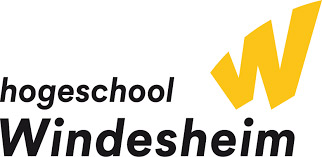Made by Windesheim students
Blockchain
Nowadays, we have a technology that allows us to trade one-to-one and register every transaction securely on a system that is called Blockchain technology. There is a lot of software code involved, and they are run by all these different computers that create a node. Node is simply a computer connected to other computers in this system that follows rules and shares information. Node’s other point is also to verify each transaction and make sure that the information on the blocks is correct. If we go into more detail to see how it works, we can say the following: Each block contains data, the hash of the block, and the previous block’s hash. The data stored is not the same from one block to another: it is specific to the type of blockchain used. That is why every block is considered unique. To create a blockchain, three blocks are enough. Each of the blocks includes the hashes of the previous blocks. That is why this system protects against the falsification of the blockchain. If someone generates a new block, it is sent to all members of the network. Every node then checks the block to make sure it has not been corrupted. If the whole thing is right, every node adds this block to its blockchain. For a description regarding the process and the security, you can read chapter “3.1 Blockchain” in the report.
Recently a number of blockchains have appeared on the market. Among the best known are Hyperledger, Enterprise Ethereum, Corda, Quorum and Openchain. A criterion that can differentiate them is the number of transactions per second (TPS), which can play a role in the choice of the blockchain to implement in a supply chain. For example, Hyperledger can perform 3500 TPS while Ethereum performs up to 25 TPS.
Based on the SWOT analysis that has been done on the blockchain, we can talk about the strengths related to this technology. Thanks to the implementation of blockchain in an organization we increased traceability of the goods, transparency within the chain and ownership of the data. If we look deeper into these different advantages, we can see traceability as blockchain can identify and track products from suppliers to finished goods throughout the supply chain. Moreover, this system allows a company which uses it to be transparence. This means that the information stored in the blockchain is accessible to all the actors included in it, which guarantees full transparency to the participants. As for the ownership, we can mention that this technology allows all users or participants who adopt it to be owners of the data it contains (blockchain is a decentralized database).
To conclude, this technology is an asset for the companies that use it since it allows all the stakeholders of the chain to trace and track the products without forgetting that it has beneficial repercussions on the customer and on the business.
Big data
Data is defined as the quality characters or symbols on which operations are performed by a computer which may be stored and transmitted in the form of electrical signals. In short, we can say that all facts and figures that can be stored in digital form can be defined as data. As mentioned in the report, big data is divided into three parts. Those parts being: structured, unstructured, and semi-structured data. Structured data means basically that the data is processed, and that the necessary information is filtered and ready to use. Unstructured data is the data that is not processed or filtered. This means that everything is mixed and to filter the data there needs to be an additional process of data structuring. Lastly, semi-structured data means that the data is not fully filtered but the data set contains certain keywords that can be used to easily process the documents and data. Except for these parts the data is also divided into five subparts. In other words, we call it the 5 V’s of big data. For a description and an example of 5V’s (velocity, veracity, volume, variety, and value), you can read chapter “3.4.4 How do we know that the data is big data?” in the report.
Reflecting on the SWOT analysis that is been made for this technology in the report, we can mention the following points as the strengths of the technology. Those points are the increase of evidence-based management, the discovery of new revenue paths, and readily available customer feedback. If we look deeper into those points, we can describe the increase of evidence-based management as creating an incentive for managers and bosses to make more accurate choices. Secondly, if we assess the readily available customer feedback feature, we can see that companies such as Netflix, Facebook, Amazon, and Disney+ are strongly relying on the customer experience for improving their processes.
As a conclusion for this technology, we can say that the companies are effectively using this feature to optimise their processes and services. Not only those two points, but they also maximise client satisfaction by working accordingly with the data acquired.
IoT
The Internet of Things (IoT) is a system of interdependent devices connected to the internet to transfer and receive data from one to another. The user can now get a detailed overview of the operation of the devices around them. Until recently, using the internet allowed people to connect and interact with each other, but now electronic objects can sense their surroundings to interact and collaborate. Although it is fascinating, a lot is going on in the background to keep the system running smoothly, from making communication more efficient between devices to processing the data more accurately. Many components are involved. In the context of IoT devices, hardware can be classified into general devices and sensing devices. If we look at the general devices, they are the main components of the information exchange and data hubs. They have connected either wired or wireless interfaces. The sensing devices are composed of sensors and actuators. These IoT devices are connected to the network using gateways. These gateways or processing nodes process the information collected by the sensors and transfer it to the cloud. The cloud acts as both a storage and processing unit. Actions are performed on the collected data for further learning and inference. Wired and wireless interfaces such as Wi-Fi, Bluetooth, ZigBee, GSMS, etc. are used to provide connectivity. for more detailed explanations regarding the process, you can read chapter “3.2 Internet of Things” in the report.
By deduction, we can say that this technology that is IoT can be beneficial for a company. Thanks to a SWOT analysis, we can notice that this technology has a very positive impact on human effort and productivity. To be more precise on each point, it is necessary to go deeper. In fact, we can see the implementation of the IoT system within an organization minimize human effort. That means IoT devices can automate tasks, which helps to improve the quality of services of a company. Moreover, productivity increased as these devices can work much longer than a human being and significantly limit errors in the process.
To conclude, this technology allows companies to optimize and streamline their processes. One thing to keep in mind is that this technology is new to the industry. This also means that there is a lot of room for improvement. A major opportunity is the combination of IoT devices with other technologies. Specifically, the combination of cloud computing and IoT could streamline capabilities and enable the adoption of smarter mobile devices.
API
API’s, aka Application Programming Interface, are parts of code that operate as a digital mediator between apps and digital systems. APIs can provide exposure for one application to another, enable interoperability between different systems, and provide a uniform language for programmers to communicate with one another. The use of APIs has grown exponentially in recent years as developers have harnessed their ability to create cross-platform apps and otherwise increase performance and productivity. If we go into more detail, APIs work by allowing pieces of software to talk to other programs on machines they're not running on. So, APIs create the links that allow applications to communicate with one another. These technologies are mainly systems operating as service protocols for developers, who created an easy way of information sharing system instead of recreating every created system. Developers cooperate instead of fighting over information. APIs solve the sharing and cooperation problem that programmers never could have handled on their own. If you want to know more about the use and operation of this technology, we advise you to read the chapter "3.5 API" in the report.
After explaining what an API is and how it works, we can feel the positive impacts that this technology can have in the industry including the supply chain. The API enables a digital supply chain in which everything can be accessed from the inventory levels to the location of sending a product to the status of an order or payment in real-time. With increased access comes increased efficiency and more control over the supply chain process. Secondly, these APIs can be accessed from almost any type of device if it has an Internet connection. This increased visibility and access to information means that suppliers can make one-time adjustments to orders, shipments, and payment terms more easily.
To conclude, API allows to have better management of the supply chain by its capacity to make the bridge between different systems. This also results in an improvement in productivity with the visibility that this system brings to the business.
Cloud Computing
Cloud computing can be described as followed: storing, accessing data and programs over the internet instead of your hardware. Currently of information overload, cloud computing brings with it greater efficiencies in data storage and retrieval. More importantly, it lowers barriers of entry into new markets for small businesses due to its scalability in delivering cost-effective IT services without big upfront investment. When we look at the benefits of the cloud computing systems, we can say that flexibility in usage and scalability -The web environment offers a degree of flexibility in usage not normally possible with the on-premises software model. The world of cloud computing systems supply chain is rapidly expanding and becoming very popular in every industry as well as for DIY (Do-It-Yourself) projects. Many companies utilize this for their business and internal database storage. With the help of the cloud computing systems supply chain, companies can move away from IT and server management. Instead, the responsibility is now put on a third-party provider. Cloud computing is changing how businesses operate and will continue to change how companies handle storage, data security, online collaboration, and other business aspects. Companies are quickly realizing that this technology can be used to their benefit in many ways.
The cloud computing systems in the supply chain is a blessing for big businesses with multiple needs for access to data at once. Having a system being accessible from everywhere by just having an internet connection has a hugely positive effect on their processes which is paying them back in form of profit and a higher grade of control in their processes. In the illustration down below, you can see what different levels of cloud computing includes. For a broad description look at the attachments.

